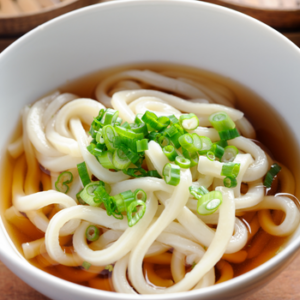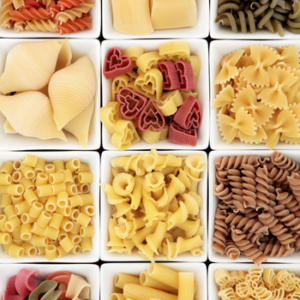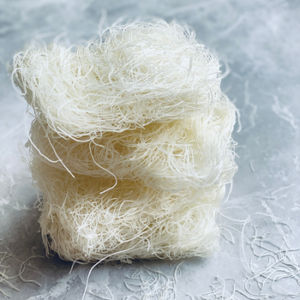 Noodles are a staple in many cultures around the world. The first noodles are thought to be eaten at least 4,000 years ago.
Noodles are a staple in many cultures around the world. The first noodles are thought to be eaten at least 4,000 years ago.
Noodles can provide a low-cost source of carbohydrates to a healthy diet. Carbohydrates provide needed energy for children and adults to grow and function. If you have been avoiding noodles due to food allergies or food intolerances, the good news is they can be made from a variety of different grains, beans, and starches.
Understanding different types of noodles and how to use them may help you become more creative in coming up with your family’s favorite noodle recipes. Additionally, it will help you know how to substitute one type of noodle for another when that’s what you have in your pantry.
Major Types of Noodles/Pasta
Italian Pasta
This type of pasta is primarily made with wheat flour and comes in hundreds of shapes. Generally, there are three main shapes for Italian pasta: ribbons, tubes or cylinders, and extruded shapes.
- Ribbon pasta is cut into thin strands like spaghetti. They work well with tomato and lighter sauces. While wider ribbons, such as fettuccine, work well with thicker cream sauces.
- Tube-shaped pasta like penne or macaroni pair well with meat sauces.
- Extruded pasta comes in lots of shapes, such as bow tie, corkscrew, and shells. Their nooks and crannies provide space for oil-based sauces like pesto to stick.
Asian Noodles
 Asian noodles can be made from wheat, rice, buckwheat, potato starch, tapioca, mung beans, or arrow root. These are the ones most easily found at grocery stores.
Asian noodles can be made from wheat, rice, buckwheat, potato starch, tapioca, mung beans, or arrow root. These are the ones most easily found at grocery stores.
- Egg noodles are made from wheat and egg. They can be stir-fried as lo mein or boiled and deep-fried into chow mein, a garnish to salads.
- Thin Japanese wheat noodles are called somen. They are usually sold dried and generally served cold. While the thick ones are called udon noodles. Most often they are cooked in soup noodle dishes. Where as, precooked udon, sold in vacuum-packed pouches, are good for stir-fries.
- Soba noodles are made from buckwheat flour and are usually served cold in the summer and hot in the winter.
- Ramen noodles are made from wheat flour with the addition of kansui, an alkaline salt to give it a yellow color and firm texture.
- Rice noodles come as thin strands or flat. They cook faster than wheat noodles, around three minutes, and are prepared in popular dishes such as pad Thai, Vietnamese phỏ, and Filipino pancit bihon. Additionally, they absorb flavors readily and work well in soups or stir-fries.
- Glass or cellophane noodles are called as such because they become transparent after cooking. They have a gelatinous and chewy texture. These noodles can be made from tapioca, mung beans, sweet potato starch, or arrowroot. Glass noodles are usually re-hydrated before cooking in stir-fries, soups, or as a filling in spring rolls.
What kind of noodles or noodle dishes do you like to eat? Let us know in the comments.

